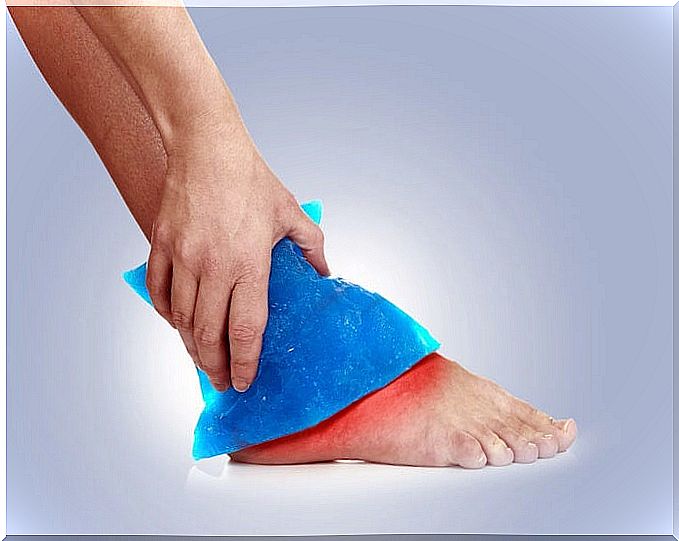Anterior Ankle Impingement Syndrome
Have you suffered a sprain? Go to the doctor to prevent it from becoming an anterior ankle impingement, an injury that may have, in some cases, surgery as the only solution.

Anterior ankle impingement syndrome is usually presented by those who usually practice physical activity. Therefore, it is common for athletes to suffer it at some point. However, in this article we will discover how we can detect it, the symptoms that it usually manifests and the best way to treat this injury.
As some articles have pointed out, such as Ligaments and tendons of the ankle: anatomy and most frequent conditions analyzed by magnetic resonance imaging , the ankle is a joint that plays an important role in standing and distribution of body weight.
For this reason, it is so necessary that in the event of any discomfort or pain in the area we go to a professional to perform the appropriate tests so that they can diagnose us. Well, as we will discover, with an anterior ankle impingement, the patient’s life can be limited.
Is the anterior ankle impingement a sprain?
To understand what an anterior ankle impingement is, we may think of a sprain. However, even if they are related it is not the same. A sprain can lead to an excessive stretching of the ligaments causing micro tears or even causing their partial or complete rupture, as pointed out in the article Approaching ankle sprain for the general practitioner .

What happens when the sprain does not heal or does not go to the doctor to solve it? Anterior ankle impingement may occur. The reason this happens is that the torn ligaments begin to heal, forming a tissue, known as the synovium, which becomes trapped with movement.
Since no rest is followed, or even the foot is bandaged, the scar tissue is usually quite large because the foot is not held still.
Symptoms
The symptoms of anterior ankle impingement are progressive in terms of pain. In the event that we do not go to a specialist to do a series of tests to diagnose this injury and start treatment, the pain will be increasingly unbearable and will affect the quality of life.
- If we are athletes who play soccer, pain will alert us that we suffer a previous impingement of the ankle every time we kick the ball.
- If we practice ballet, the dance positions that require standing “on tiptoe” will cause intense pain that will increase progressively.
The pain that can alert us that we suffer this type of injury can also manifest itself, if we attend Pilates and they tell us to put our feet in a “toe” position.
Any movement that involves the work of the anterior part of the ankle will cause pain to appear. In addition, it is also possible that there is inflammation in the area.
Treatments

As we can see, pain can limit us if we practice any of the sports already mentioned.
For this reason, it is necessary to put ourselves in the hands of a professional who will perform an MRI to see if there really is an anterior impingement of the ankle. Once this has been the diagnosis, proceed as follows:
- Anti-inflammatory : it can be in the form of an ointment, through medications or in a much more natural way such as applying ice. The goal is to reduce inflammation and pain.
- Corticosteroids : If the pain is severe enough, corticosteroids may be another option. The above is for milder cases of anterior ankle impingement.
- Surgery : in the event that the synovial tissue is very large and, therefore, the previous methods are not going to be entirely effective, it will be necessary to undergo surgery.
In all cases, the doctor will recommend resting or doing low-impact physical activity for the ankle area. We recommend that at the slightest symptom of pain or discomfort in the anterior part of the ankle we go to the doctor. Only in this way, we can prevent the synovial tissue from continuing to grow and that the only solution is to undergo surgery.
Have you ever suffered a sprain and did not rest? Have you ever been diagnosed with anterior ankle impingement? We hope that this article has allowed you to have an idea about this type of injury that if you practice soccer or ballet, among other sports, you may suffer at some point.









